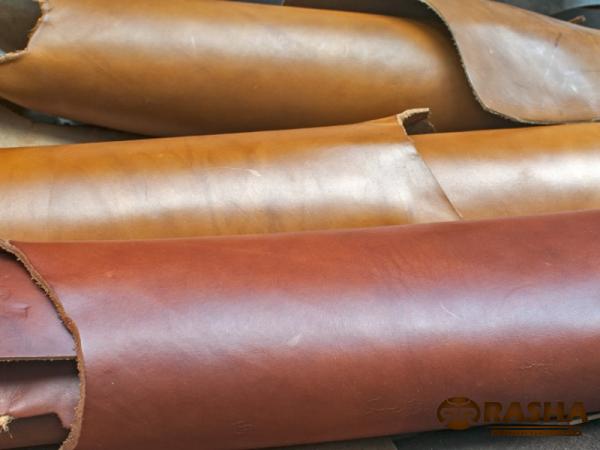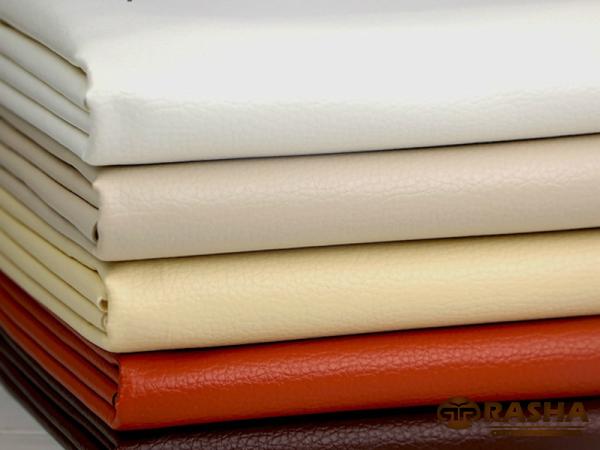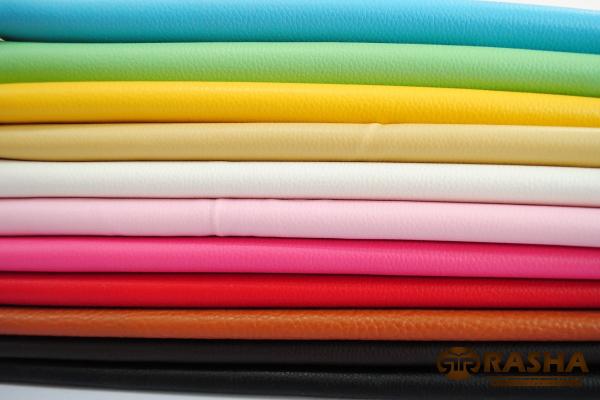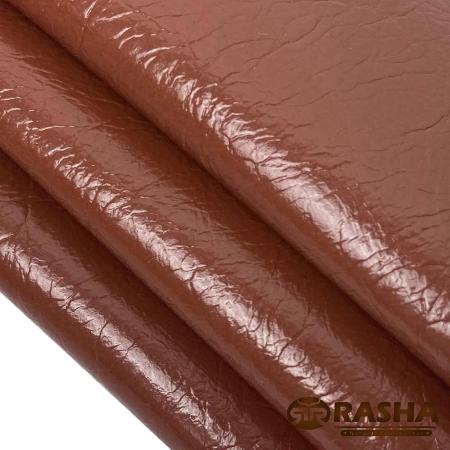Synthetic leather and PU leather are two popular alternatives to genuine leather in the world of fashion, upholstery, and other industries. While both are artificial materials designed to mimic the look and feel of real leather, there are some key differences between them. In this article, we will explore the characteristics, production process, benefits, and drawbacks of synthetic leather and PU leather, to help you understand which option may be more suitable for your needs. Synthetic leather, also known as faux leather, is a man-made material that is designed to imitate the appearance and texture of real leather. It is typically made from a base fabric that is coated with a plastic, such as PVC (polyvinyl chloride) or polyurethane. This coating gives the material its leather-like texture and appearance. Synthetic leather can be produced in a variety of colors, textures, and finishes to suit different applications. On the other hand, PU leather, which stands for polyurethane leather, is a specific type of synthetic leather that is made by applying a coating of polyurethane to a fabric backing. The polyurethane coating gives the material its leather-like texture, softness, and durability. One of the main differences between synthetic leather and PU leather lies in the materials used in their production.

leather
 Synthetic leather can be made from a variety of materials, including PVC, thermoplastic elastomers (TPE), and polyurethane (PU). On the other hand, PU leather is solely made from polyurethane. This distinction makes PU leather a type of synthetic leather, but not all synthetic leathers are PU leather. In terms of appearance, both synthetic leather and PU leather can closely resemble genuine leather, particularly if they are made using high-quality materials and production techniques. However, there may be slight variations in texture, suppleness, and overall look between the two materials. When it comes to the production process, both synthetic leather and PU leather involve coating a fabric with a plastic material. However, the specific methods and materials used can vary. Synthetic leather may be produced by applying a layer of PVC or other plastic material to the fabric backing, while PU leather involves applying a polyurethane layer. The choice of coating material can affect the properties and characteristics of the final product. In terms of benefits, both synthetic leather and PU leather offer several advantages over genuine leather. Firstly, they are generally more affordable, making them accessible options for consumers who want the look and feel of leather without the high price tag.
Synthetic leather can be made from a variety of materials, including PVC, thermoplastic elastomers (TPE), and polyurethane (PU). On the other hand, PU leather is solely made from polyurethane. This distinction makes PU leather a type of synthetic leather, but not all synthetic leathers are PU leather. In terms of appearance, both synthetic leather and PU leather can closely resemble genuine leather, particularly if they are made using high-quality materials and production techniques. However, there may be slight variations in texture, suppleness, and overall look between the two materials. When it comes to the production process, both synthetic leather and PU leather involve coating a fabric with a plastic material. However, the specific methods and materials used can vary. Synthetic leather may be produced by applying a layer of PVC or other plastic material to the fabric backing, while PU leather involves applying a polyurethane layer. The choice of coating material can affect the properties and characteristics of the final product. In terms of benefits, both synthetic leather and PU leather offer several advantages over genuine leather. Firstly, they are generally more affordable, making them accessible options for consumers who want the look and feel of leather without the high price tag.
Specifications of leather
 Additionally, synthetic leather and PU leather are often more resistant to stains and fading than genuine leather, making them easier to clean and maintain. They also tend to be more water-resistant, which can be advantageous in certain applications. Another benefit of synthetic leather and PU leather is that they are considered more environmentally friendly alternatives to genuine leather. Where the production of genuine leather involves raising animals for their skin, synthetic leathers are made from readily available materials that do not require the same level of resources or contribute to the same environmental impact. In terms of durability and longevity, both synthetic leather and PU leather can be quite resilient. However, the quality and lifespan of the materials will depend on various factors, including the specific manufacturer, production techniques, and care and maintenance practices. Proper care and usage will extend the lifespan of these materials, but over time, they may show signs of wear and tear. One potential drawback of synthetic leather and PU leather is that they may not have the same breathability as genuine leather. Genuine leather is a natural material that allows air to pass through, whereas synthetic leathers and PU leather tend to trap heat and moisture.
Additionally, synthetic leather and PU leather are often more resistant to stains and fading than genuine leather, making them easier to clean and maintain. They also tend to be more water-resistant, which can be advantageous in certain applications. Another benefit of synthetic leather and PU leather is that they are considered more environmentally friendly alternatives to genuine leather. Where the production of genuine leather involves raising animals for their skin, synthetic leathers are made from readily available materials that do not require the same level of resources or contribute to the same environmental impact. In terms of durability and longevity, both synthetic leather and PU leather can be quite resilient. However, the quality and lifespan of the materials will depend on various factors, including the specific manufacturer, production techniques, and care and maintenance practices. Proper care and usage will extend the lifespan of these materials, but over time, they may show signs of wear and tear. One potential drawback of synthetic leather and PU leather is that they may not have the same breathability as genuine leather. Genuine leather is a natural material that allows air to pass through, whereas synthetic leathers and PU leather tend to trap heat and moisture.
buy leather
 This can make them less comfortable in certain climates or applications. However, advancements in production techniques have led to the development of more breathable synthetic leathers, which can mitigate this issue. Another consideration is that the production of synthetic leather and PU leather involves the use of chemicals and plastics, which can have potential environmental and health impacts. Some components used in the production of synthetic leathers, such as PVC, have been associated with the release of harmful substances like dioxins. However, many manufacturers have taken steps to reduce the environmental impact of their production processes and develop more sustainable alternatives. Ultimately, the choice between synthetic leather and PU leather depends on your specific needs and preferences. If you are looking for a more affordable and environmentally friendly alternative to genuine leather, both options can be suitable. It is important to consider factors such as appearance, durability, breathability, and potential environmental impacts when making your decision. In conclusion, synthetic leather and PU leather are artificial materials that mimic the appearance and texture of real leather. While both offer various benefits, such as affordability and ease of maintenance, they also have some drawbacks to consider. Understanding the differences between these materials can help you make an informed decision when choosing between synthetic leather and PU leather for your particular applications.
This can make them less comfortable in certain climates or applications. However, advancements in production techniques have led to the development of more breathable synthetic leathers, which can mitigate this issue. Another consideration is that the production of synthetic leather and PU leather involves the use of chemicals and plastics, which can have potential environmental and health impacts. Some components used in the production of synthetic leathers, such as PVC, have been associated with the release of harmful substances like dioxins. However, many manufacturers have taken steps to reduce the environmental impact of their production processes and develop more sustainable alternatives. Ultimately, the choice between synthetic leather and PU leather depends on your specific needs and preferences. If you are looking for a more affordable and environmentally friendly alternative to genuine leather, both options can be suitable. It is important to consider factors such as appearance, durability, breathability, and potential environmental impacts when making your decision. In conclusion, synthetic leather and PU leather are artificial materials that mimic the appearance and texture of real leather. While both offer various benefits, such as affordability and ease of maintenance, they also have some drawbacks to consider. Understanding the differences between these materials can help you make an informed decision when choosing between synthetic leather and PU leather for your particular applications.










Your comment submitted.